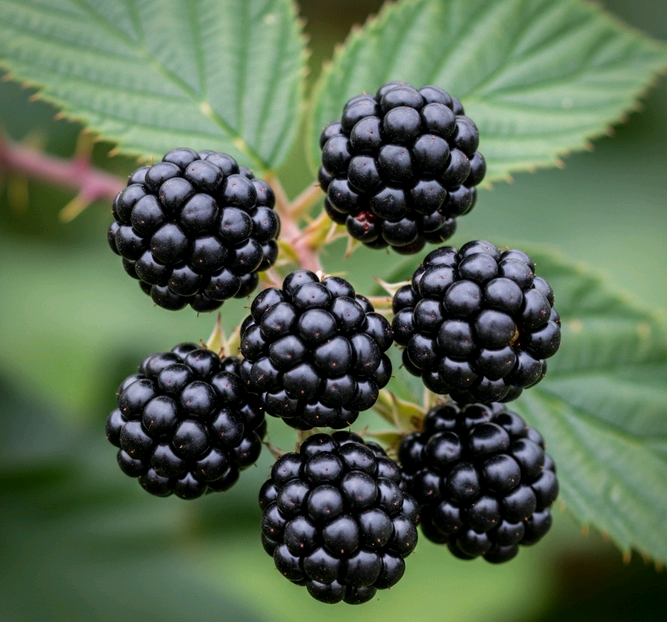Are There Any Poisonous Berries That Look Like Blackberries?
Foragers love wild blackberries, and for good reason. There’s nothing quite like pulling a plump, sun-warmed berry right off the bush and popping it in your mouth. But with that thrill comes a question that almost everyone has—what if I pick something poisonous? Is there a deadly look-alike out there just waiting to get me?
That fear is totally valid, but here’s the good news: you can relax. Experts in foraging and botany agree that blackberries are one of the safest wild berries you can find. The short answer is that there are no truly poisonous berries that are a dead ringer for a blackberry. The berries you’re most likely to confuse them with are either edible or have clear differences that make them easy to identify.
This doesn’t mean you shouldn’t be careful, of course. Proper identification is always non-negotiable. So let’s break down exactly what to look for and what to watch out for.
The Golden Rule of Blackberry Picking
This is the most important test you can do. When you pick a ripe blackberry, the white or light-colored core of the fruit stays inside the berry. It’s a permanent part of the fruit. This is the single most reliable way to know you’ve got a true blackberry.
The Common Look-Alikes (and How to Spot the Difference)
While there aren’t any dangerous doppelgängers, these are the plants most often confused with blackberries:
- Black Raspberries (Rubus occidentalis)
- The Difference: These are the closest relatives and are totally edible. They look super similar, but here’s the key: when you pick a black raspberry, the core stays on the plant, leaving a hollow, thimble-shaped cavity inside the berry. A true blackberry, remember, has a solid core.
- Mulberries (Morus genus)
- The Difference: Mulberries also have that classic clustered look, but they grow on trees, not on thorny canes or bushes. The ripe fruit is delicious, but it’s not a blackberry. When you pick a mulberry, it pulls free with a small, leafy green stem attached, not with a hollow core.
- Dewberries (Rubus genus)
- The Difference: These are another close cousin and are also perfectly safe to eat. The biggest difference is how they grow. Blackberries grow on upright canes, while dewberries grow on low-lying, trailing vines that crawl along the ground.
The Poisonous Berry That Is Not a Blackberry
You’ve probably heard scary stories about poisonous black berries, but they don’t look like blackberries. For instance:
- Deadly Nightshade (Atropa belladonna)
- The Difference: Nightshade has shiny black berries, but they’re small, smooth, and round, growing in little clusters on a shrub. They do not have the blackberry’s signature drupelet look at all. The differences are so obvious that you would have to be really, really confused to mistake it for a blackberry.
Final Word & The Ultimate Rule
Foraging for blackberries is a fantastic and safe activity. Just remember the “hollow core” test for raspberries and the solid core for blackberries. Once you get that down, you’re good to go. But no matter what you’re picking, the golden rule of foraging is an oldie but a goodie: “When in doubt, throw it out.” You should always be 100% sure of a plant’s identity before you eat it.

